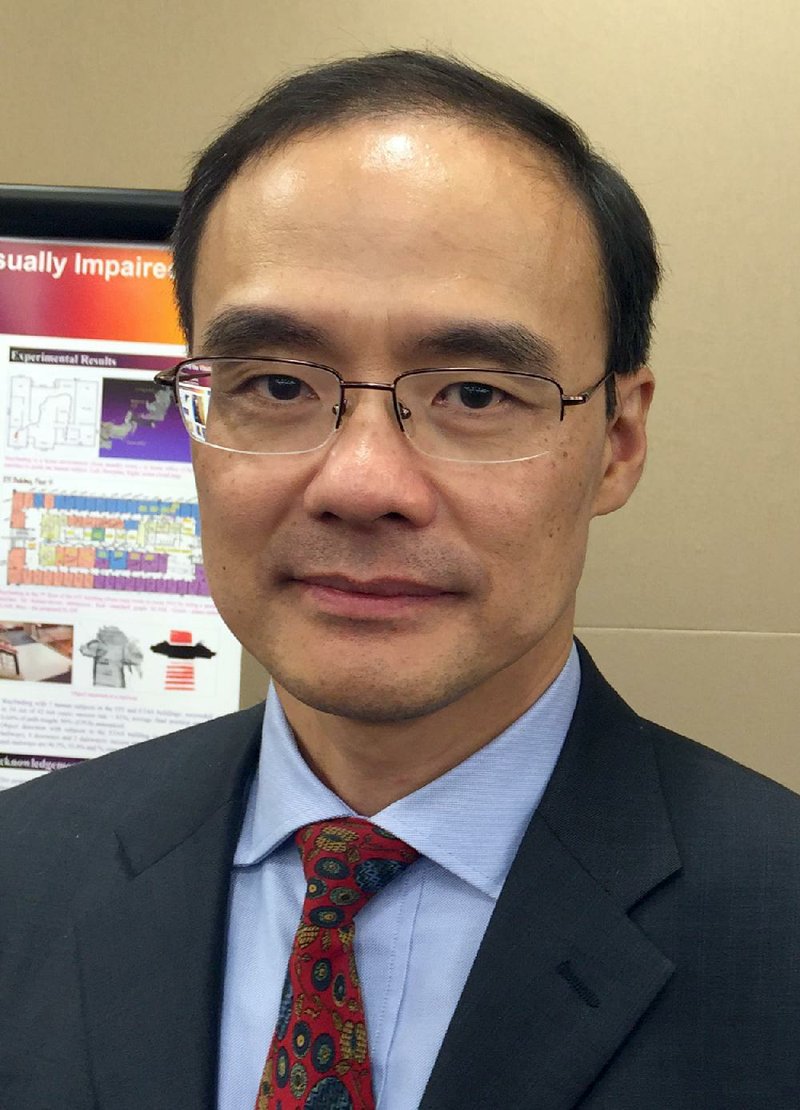WASHINGTON -- Robots and robotic devices invaded the Halls of Congress last week, but they bore little resemblance to R2-D2, C3PO or BB-8.
One looked like a spider and can crawl over rocky terrain. Another resembled a snake, slithering across the carpet and capable of climbing Capitol Hill trees.
A third, developed at the University of Arkansas at Little Rock, appeared, at first glance, to be a simple pole, the kind of cane blind people carry. But the stick was a high-tech robotic assistance device, designed to help the visually impaired to safely navigate their surroundings.
During an open house sponsored by the Congressional Robotics Caucus Advisory Committee, scientists, educators and government officials talked about the potential for robotic devices, predicting they will boost the global economy and revolutionize everyday life.
For six hours Thursday, UALR representatives took their place beside researchers from MIT, Johns Hopkins, Carnegie Mellon, Rice University and other top-tier colleges, showing off their high-tech gadgets and highlighting their advances.
Participants wore I Love Robots buttons, picked up free copies of Robotics and Automation Magazine and scooped up packs of 2016 Robot All-Stars trading cards. (The MVP of the collection, arguably, is Milo R25, an ethical robot mediator who can "express non-verbal social cues.")
Last week's event celebrated the fifth anniversary of the National Robotics Initiative, a program kicked off by President Barack Obama in June 2011.
The National Science Foundation, the National Institutes of Health, NASA, the Defense Department and the U.S. Department of Agriculture were early backers. The White House said the initiative focuses on "developing robots that work with or beside people to extend or augment human capabilities, taking advantage of the different strengths of humans and robots."
Robotics boosters said the devices can tackle jobs that are dirty, dull and dangerous and predicted sweeping advancements in the field in the coming decades.
Money spent on this sort of research is a wise investment, said Jeff Burnstein, president of the Robotics Industries Association.
The initiative, he told the audience, "sent a message to the world that this is critical technology for the 21st century and that this program is funding research that is going to have a major impact."
Another speaker said robotics will give a powerful boost to the nation's economy, enabling it to grow and expand, and remain competitive.
"The biggest problem in the U.S. economy over the last decade has been the radical decline in productivity. ... We've gotten most of the productivity we can get out of things we've got now," said Robert Atkinson, president of the Information Technology & Innovation Foundation, a Washington think tank.
"Robotics is a game changer. It is a fundamentally new kind of general purpose technology that's going to allow us to get productivity in a wide variety of industries: construction, health care, certainly manufacturing ... waste pick up," he told the crowd. "This is really central to our future."
After Thursday's presentation, guests were invited to stay and witness interactive demonstrations.
Experts displayed robotic devices and answered questions about their work.
Researchers were there to talk about a robotic drone that can fly over farmland and help growers collect data. Others showed off their work on exoskeletons and cutting edge prosthetic devices.
UALR Systems Engineering professor Cang Ye showed off an early prototype of a "navigation aid" for the visually impaired.
Among other things, it would "help the blind people to get from point A to point B in an indoor environment. Inside big buildings or something like that. Also, the system can detect ... doorways, hallways and stairways," Ye said.
For blind people, "it's a big difficulty [for] them to find doorways, in particular if a door is closed. If the cane can detect the doorway for them, they just simply move toward a doorway and then open the door," he said.
The device would be able to convey travel directions and help the user to spot obstacles, speaking to the person it assists.
Ye said he has been working on the project for two years with funding from the National Science Foundation and the National Institutes of Health.
The instrument is still in the early stages, he said. "For this type of device, I would say that within 10 years, probably, it can be used," he added.
Ye said this is the first time he's showed off his device on Capitol Hill. He credited federal officials who have funded the project with making it possible for him to participate.
The room buzzed for hours; at times the space was completely filled.
"It's a big crowd. That means robotics now is becoming more and more important to our nation," Ye said.
After years of research, robotics has reached "a turning point from fundamental research to real application in [the] real world," he added.
Metro on 06/13/2016

